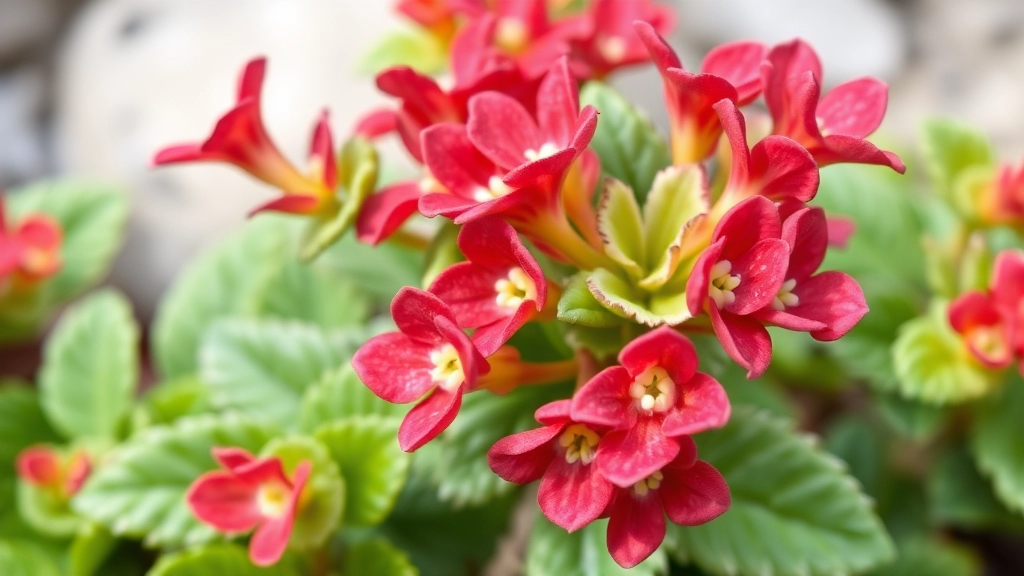Kalanchoe Tomentosa Brown: The Chocolate Soldier
If you’re looking to add a unique succulent to your collection, the Kalanchoe Tomentosa Brown, commonly known as the “Chocolate Soldier,” is a fantastic choice. This plant is adored for its soft, velvety leaves edged with brown, giving it a distinctive appearance. In this guide, I’ll share essential tips on how to care for your Kalanchoe Tomentosa, ensuring it thrives in your home.
Understanding the Needs of Your Kalanchoe Tomentosa Brown
Understanding the specific needs of your Kalanchoe Tomentosa Brown is crucial. This succulent loves bright, indirect light and can tolerate some direct sunlight. When it comes to watering, less is more—allow the soil to dry out completely between waterings to prevent root rot. Additionally, maintaining a warm environment and using well-draining soil will help your plant flourish.
Stay Tuned for More Tips
Stay tuned as we delve into more detailed care tips, propagation methods, and how to tackle common pests and diseases.
When exploring the world of Kalanchoe Tomentosa, one might wonder, “What sets these varieties apart?”
Kalanchoe Tomentosa, often referred to as the “Panda Plant,” boasts several unique varieties, each with distinct characteristics that make them appealing to succulent enthusiasts.
## Key Varieties of Kalanchoe Tomentosa
– **Kalanchoe Tomentosa ‘Fang’**:
– Features elongated leaves with sharp, tooth-like edges.
– The leaves are covered in a fine layer of fuzz, giving them a soft appearance.
– **Kalanchoe Tomentosa ‘Chocolate Soldier’**:
– Known for its rich brown edges that contrast beautifully with its green centre.
– This variety is particularly popular for its striking visual appeal.
– **Kalanchoe Tomentosa ‘Silver Fox’**:
– Displays a silvery-grey hue, making it a stunning addition to any collection.
– The leaves are thick and fleshy, typical of succulents.
## Unique Features
– **Leaf Texture**:
– All varieties have a velvety texture due to the fine hairs covering their leaves. This not only adds to their charm but also helps reduce water loss.
– **Growth Habit**:
– Kalanchoe Tomentosa tends to grow upright, forming a bushy appearance that can reach up to 30 cm in height.
– **Flowering**:
– While not the primary draw, these plants can produce small, tubular flowers, typically in shades of yellow or orange, during the right conditions.
For more detailed information on the different types and care tips, check out our guide on [types of Kalanchoe Tomentosa varieties and care tips](https://planthq.org/types-of-kalanchoe-tomentosa-varieties-and-care-tips/). If you’re looking to expand your collection, you might also be interested in our comprehensive [guide to Kalanchoe Tomentosa care](https://planthq.org/kalanchoe-tomentosa-varieties-care-types-and-propagation/).
Care Requirements for Brown-Edged Kalanchoe Tomentosa
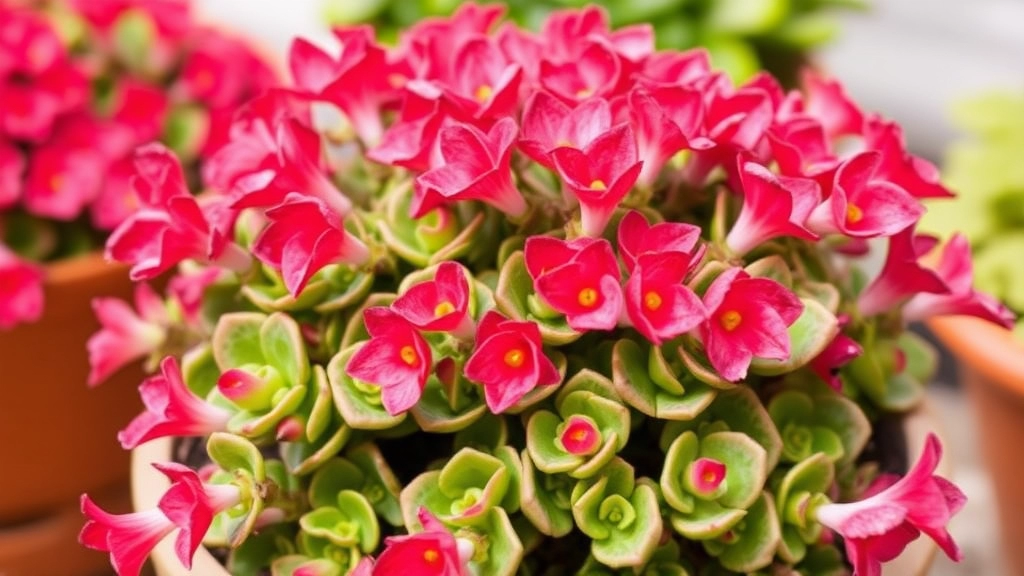
So, you’ve got your eye on the stunning Brown-Edged Kalanchoe Tomentosa, right? You’re probably wondering how to keep it looking its best. Let’s dive into the essentials!
Light and Placement
- Bright Indirect Light: These beauties thrive in bright, indirect sunlight. A south or west-facing window is ideal.
- Avoid Direct Sun: Too much direct sun can scorch those lovely leaves.
Soil and Potting
- Well-Draining Soil: Use a cactus or succulent mix. You want that water to flow right through!
- Pot with Drainage Holes: Make sure your pot has holes at the bottom to prevent water from sitting.
Temperature and Humidity
- Warm Temperatures: Aim for a range of 20-25°C (68-77°F). They love warmth but can handle a bit of coolness.
- Low Humidity: These plants prefer dry air, so keep them away from overly humid spots.
Fertilization
- Minimal Feeding: During the growing season (spring and summer), a diluted succulent fertilizer once a month is perfect.
- Skip Winter: They don’t need feeding in the colder months.
Pruning and Maintenance
- Remove Dead Leaves: Regularly check for any dead or shriveled leaves and remove them. Keeps your plant healthy and looking sharp!
- Dusting: Wipe leaves gently with a damp cloth to keep them clean and allow for better sunlight absorption.
Watering Tips and Drought Tolerance
When it comes to caring for your Brown-Edged Kalanchoe Tomentosa, understanding its watering needs is crucial.
How Often Should You Water?
- Frequency: Water every two to three weeks during the growing season (spring and summer).
- Check the Soil: Always check the top inch of soil. If it feels dry, it’s time to water.
Watering Technique
- Deep Soaking: Water thoroughly until it drains out of the bottom. This encourages deep root growth.
- Avoid Overwatering: Ensure the pot has drainage holes. Standing water can lead to root rot.
Drought Tolerance
Kalanchoe Tomentosa is a champion when it comes to drought tolerance. Here’s why:
- Water Storage: Its fleshy leaves store water, allowing it to thrive in dry conditions.
- Adaptability: This plant can survive extended periods without water, making it perfect for busy individuals or those new to gardening.
Signs of Underwatering
- Wrinkled Leaves: If the leaves appear shrivelled or wrinkled, it’s time to give your plant a drink.
- Leaf Drop: Dropping leaves can also indicate that your plant is thirsty.
Best Practices for Watering
- Seasonal Adjustments: Reduce watering frequency in the autumn and winter months when the plant is dormant.
- Water Quality: Use room temperature, filtered, or rainwater for the best results.
Ideal Light and Temperature Conditions for Optimal Growth
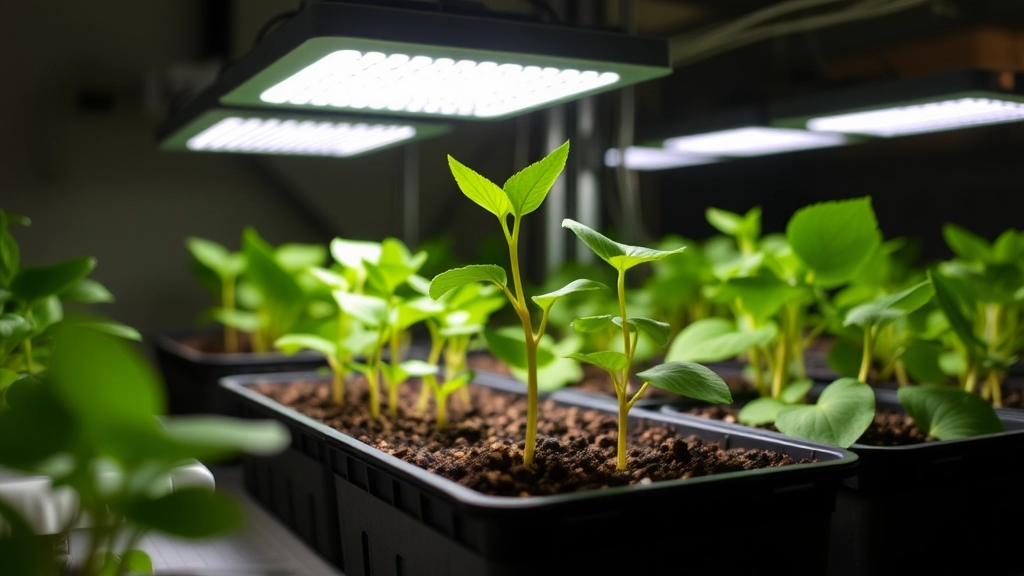
When it comes to caring for your Kalanchoe Tomentosa, understanding its light and temperature needs is crucial. You might be wondering why your plant isn’t thriving or why its leaves aren’t as vibrant as they should be.
Light Requirements
Kalanchoe Tomentosa, commonly known as the “Panda Plant,” thrives in bright, indirect sunlight. Here are some key points to consider:
- Direct Sunlight: While it can tolerate some direct sunlight, too much can scorch its leaves. Aim for 4-6 hours of bright, indirect light daily.
- Low Light: Insufficient light can lead to leggy growth and reduced leaf colour. If your plant starts stretching towards the light source, it’s a sign it needs more brightness.
- Artificial Light: If natural light is scarce, consider using grow lights to supplement its needs.
Temperature Preferences
Temperature plays a significant role in the health of your Kalanchoe Tomentosa. Here’s what you need to know:
- Ideal Range: This succulent prefers temperatures between 18°C to 24°C (65°F to 75°F).
- Cold Sensitivity: It is sensitive to cold and should be kept away from temperatures below 10°C (50°F).
- Heat Tolerance: While it can handle warmer conditions, ensure it’s not exposed to extreme heat or drafts.
Propagating Kalanchoe Tomentosa: Step-by-Step Guide
Are you looking to expand your collection of Kalanchoe Tomentosa? Propagation is a rewarding process that allows you to grow new plants from existing ones. Here’s a straightforward guide to help you through it.
Why Propagate Kalanchoe Tomentosa?
Many plant enthusiasts find joy in propagating their succulents. Not only does it save money, but it also allows you to share the beauty of your Kalanchoe with friends and family.
Common Pests and Diseases to Watch Out For
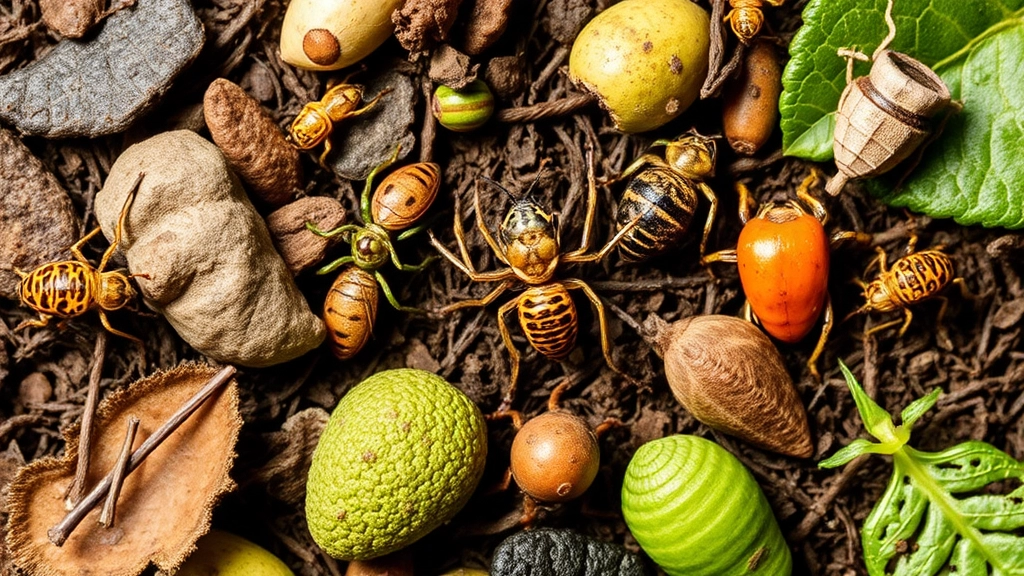
So, you’ve got your Brown-Edged Kalanchoe Tomentosa thriving, but what about those pesky pests and diseases that can sneak in and ruin your day?
Let’s dive into the common issues you might face and how to tackle them.
Common Pests
- Mealybugs
- These little white fluff balls love to hide in the leaf joints.
- They suck the sap from your plant, leading to wilting and yellowing.
- Tip: Wipe them off with a cotton swab dipped in rubbing alcohol.
- Aphids
- Tiny, green insects that can quickly multiply.
- They also feast on your plant’s sap, causing stunted growth.
- Tip: Spray them off with a strong jet of water or use insecticidal soap.
- Spider Mites
- These are super sneaky and can leave tiny webs behind.
- They thrive in dry conditions, so keep an eye out.
- Tip: Increase humidity around your plant or mist it regularly.
Common Diseases
- Leaf Spot
- Brown or black spots on leaves? That’s leaf spot.
- It often comes from overwatering or poor air circulation.
- Tip: Make sure your pot has drainage holes and avoid wetting the leaves.
- Powdery Mildew
- A white powdery coating on leaves indicates this fungal issue.
- It thrives in high humidity and low airflow.
- Tip: Improve air circulation and avoid overhead watering.
- Root Rot
- If your plant starts wilting and the leaves feel mushy, root rot might be the culprit.
- This usually happens from overwatering.
- Tip: Ensure your potting mix is well-draining and let the soil dry out between waterings.
Prevention is Key
To keep your Kalanchoe Tomentosa healthy, follow these simple steps:
- Regular Checks: Inspect your plants weekly for any signs of pests or disease.
- Clean Leaves: Wipe down the leaves to remove dust and potential pests.
- Proper Watering: Stick to the watering tips we discussed earlier to avoid root rot and other issues.
Preventing Root Rot in Succulents
As we delve into the care of Kalanchoe Tomentosa, it’s crucial to address a common concern: root rot. This issue can be detrimental to your succulent’s health, often resulting from overwatering or poor drainage.
Understanding Root Rot
Root rot is a fungal disease that thrives in soggy soil. It can quickly kill your plant if not addressed. Here are some signs to look out for:
- Wilting Leaves: Despite adequate watering, leaves may appear droopy.
- Brown or Mushy Roots: Healthy roots should be firm and white.
- Foul Odour: A rotten smell from the soil indicates decay.
Preventative Measures
To keep your Kalanchoe Tomentosa thriving, consider these straightforward tips:
- Use Well-Draining Soil: A cactus or succulent mix is ideal.
- Choose the Right Pot: Ensure it has drainage holes to allow excess water to escape.
- Water Wisely: Always let the soil dry out completely between waterings.
- Monitor Humidity: Keep humidity levels low, as high moisture can promote rot.
Repotting Tips
When repotting, check the roots. If you notice any signs of rot, trim away the affected areas with sterilised scissors. Dust the cuts with a fungicide to prevent further issues.
For more detailed guidance, you can refer to our comprehensive guide on how to care for Panda Plant (Kalanchoe Tomentosa). Additionally, if you’re interested in other varieties, check out our article on Kalanchoe Tomentosa varieties and care.
Toxicity Concerns for Pets and Kalanchoe Plants
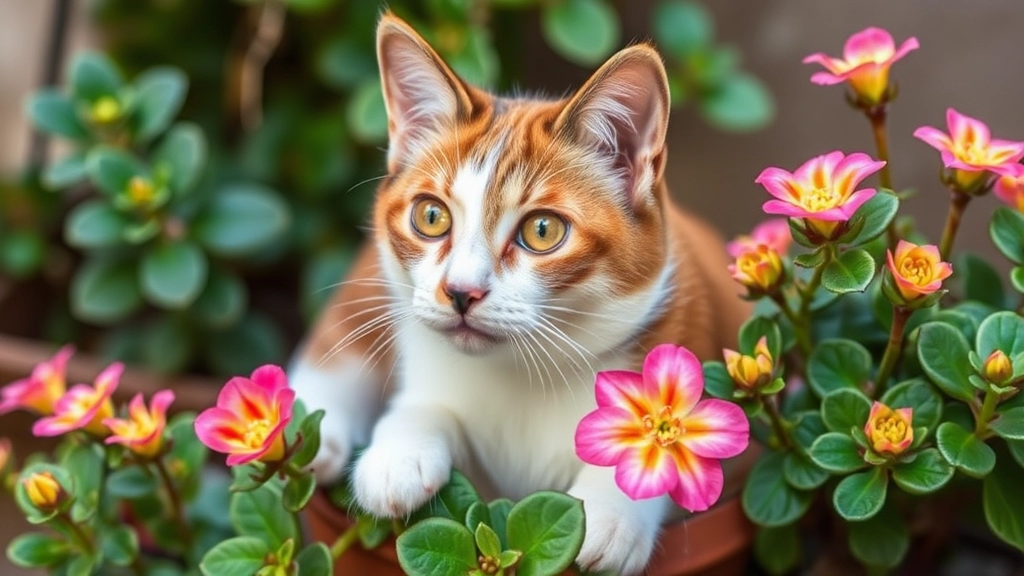
So, you’re loving your Kalanchoe Tomentosa, but what about your furry friends?
It’s a valid concern. Many plant lovers worry about whether their beloved plants are safe for pets.
Kalanchoe plants can be toxic to cats and dogs, which is something to keep in mind if you have curious pets around.
Here’s what you need to know:
- Symptoms of Toxicity: If your pet nibbles on a Kalanchoe, watch for signs like:
- Vomiting
- Diarrhoea
- Lethargy
- Changes in appetite
- What to Do: If you suspect your pet has ingested any part of the plant:
- Contact your vet immediately.
- Keep the plant out of reach to prevent accidents.
- Pet-Friendly Alternatives: If you’re worried about toxicity, consider adding some pet-safe plants to your collection, like:
- Spider plants
- Boston ferns
- Bamboo palms
Being aware of these toxicity concerns doesn’t mean you can’t enjoy your Kalanchoe. Just take a few precautions to ensure your pets stay safe while you admire your gorgeous plant.
Repotting and Fertilization: Best Practices
When it comes to keeping your Brown-Edged Kalanchoe Tomentosa thriving, understanding the right time and method for repotting is crucial. Many plant owners worry about how often to repot or what kind of soil to use. Let’s break it down.
When to Repot
- Signs to Look For:
- Roots are growing out of the drainage holes.
- The plant appears top-heavy or unstable.
- Soil dries out too quickly, indicating it has become compacted.
- Optimal Timing:
- Spring is the best time to repot, as the plant is entering its active growing season.
Choosing the Right Soil
- Soil Type:
- Use a well-draining cactus or succulent mix.
- You can also create your own by mixing potting soil with sand or perlite.
- Container Selection:
- Choose a pot with drainage holes to prevent water retention.
Fertilization Tips
- Frequency:
- Fertilize during the growing season (spring and summer) every 4-6 weeks.
- Type of Fertilizer:
- Use a balanced, diluted liquid fertilizer or a slow-release cactus fertilizer.
- Application:
- Always apply fertilizer to moist soil to avoid burning the roots.
Additional Considerations
- Aftercare:
- Once repotted, allow your Kalanchoe to settle for a week before resuming your regular watering schedule. For more detailed care instructions, refer to our guide on Kalanchoe Pinnata care.
- Signs of Over-Fertilization:
- Yellowing leaves or a white crust on the soil surface can indicate too much fertilizer. Learn about the side effects and risks associated with over-fertilization.
FAQs for Brown-Edged Kalanchoe Tomentosa Care
What type of light does a Brown-Edged Kalanchoe Tomentosa need?
The Kalanchoe Tomentosa thrives in bright, indirect sunlight. A south or west-facing window is ideal. Avoid placing it in direct sun to prevent leaf scorching.
What kind of soil is best for Kalanchoe Tomentosa?
Use a well-draining cactus or succulent mix. This ensures that water flows right through and doesn’t sit in the soil, which can cause root rot.
What temperature range is ideal for a Kalanchoe Tomentosa?
The ideal temperature range for this succulent is between 20-25°C (68-77°F). It prefers warm temperatures but can handle a bit of coolness. Avoid temperatures below 10°C (50°F).
How often should I fertilize my Kalanchoe Tomentosa?
During the growing season (spring and summer), you should fertilize your plant once a month using a diluted succulent fertilizer. Skip fertilization during the winter months.
How do I deal with common pests on my Kalanchoe Tomentosa?
Common pests include mealybugs, aphids, and spider mites. Wipe mealybugs off with a cotton swab dipped in rubbing alcohol. Spray aphids off with a strong jet of water or use insecticidal soap. Increase humidity or mist your plant regularly to deter spider mites.
What should I do if my Kalanchoe Tomentosa has leaf spots?
Leaf spots are often caused by overwatering or poor air circulation. Ensure your pot has drainage holes and avoid wetting the leaves. Improve air circulation around the plant.
Is Kalanchoe Tomentosa toxic to pets?
Yes, Kalanchoe plants can be toxic to cats and dogs. Symptoms of toxicity include vomiting, diarrhea, lethargy, and changes in appetite. If you suspect your pet has ingested any part of the plant, contact your vet immediately and keep the plant out of reach.
How can I prevent diseases in my Kalanchoe Tomentosa?
Regularly check your plant for signs of pests or disease. Wipe down the leaves to remove dust and potential pests. Stick to proper watering practices to avoid root rot and other issues.
Can I use artificial light for my Kalanchoe Tomentosa?
Yes, if natural light is scarce, you can use grow lights to supplement its light needs. Aim for 4-6 hours of bright, indirect light daily.
How do I maintain my Kalanchoe Tomentosa?
Regularly remove dead or shriveled leaves to keep your plant healthy and looking sharp. Wipe leaves gently with a damp cloth to keep them clean and allow for better sunlight absorption.
References
-
Kalanchoe Tomentosa Growing Guide – The Spruce
-
Panda Plant Care – Gardening Know How
-
Kalanchoe Toxicity Information – ASPCA
